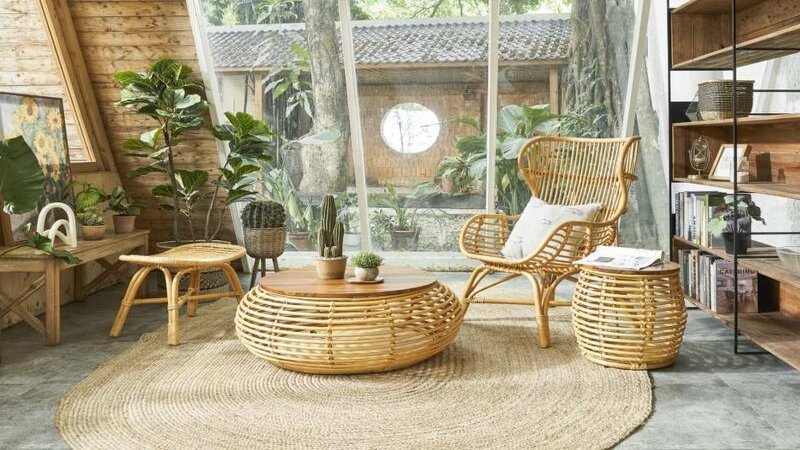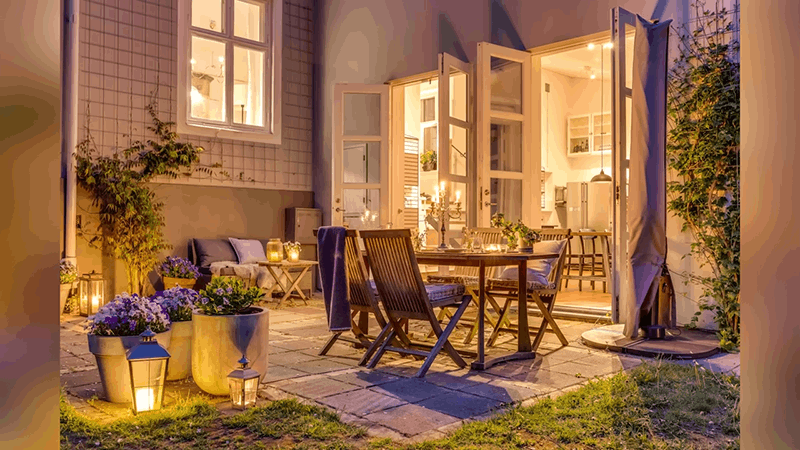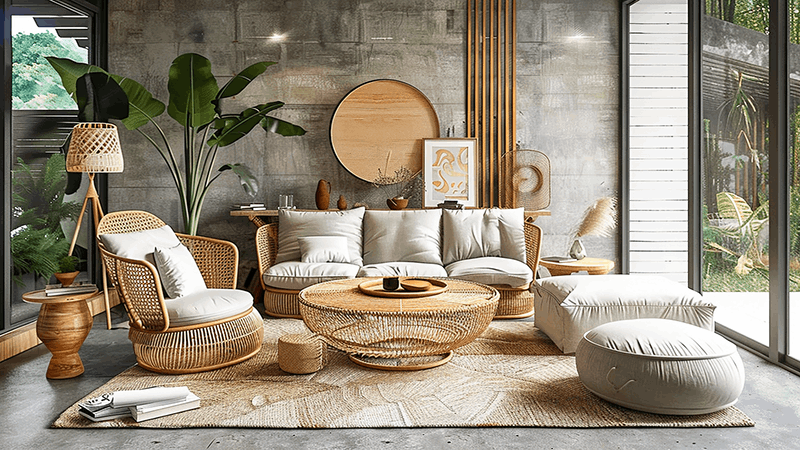No products in the cart.
Blog
Difference Between Rattan And Bamboo: Ideal Home Decor
The difference between rattan and bamboo is a common source of confusion for anyone looking to enhance their home with natural materials. They might seem alike, however, rattan and bamboo each offer distinct features that can influence your decor choices.
To ensure your space reflects both style and sustainability, we will explore these differences and you can choose the right material for your decor in this blog.
What is the Difference Between Rattan and Bamboo

Rattan and bamboo are both popular natural materials but differ significantly in their characteristics. Rattan is a type of climbing palm with flexible, durable stems that can be woven into intricate designs, making it ideal for furniture and decorative items.
Bamboo, on the other hand, is a fast-growing grass with a rigid and strong woody stem, known for its lightweight yet robust nature. While rattan is used for its flexibility and decorative potential, bamboo is favored for its strength and structural applications.
Difference in Material Properties
When comparing rattan and bamboo, it’s important to understand their distinct material properties.
| Property | Rattan | Bamboo |
| Flexibility | Highly flexible, easily woven into various shapes | Rigid and inflexible, not suitable for weaving |
| Durability | Durable but can be damaged by moisture | Extremely durable and strong, resistant to wear |
| Appearance | Natural, textured surface with a traditional look | Smooth, sleek surface with a modern appearance |
| Weight | Relatively lightweight, but varies with design | Lightweight and easy to handle |
| Growth rate | Slow-growing palm, less renewable | Rapidly growing grass, highly renewable |
Understanding these differences helps in choosing the right material for your needs, whether you prefer the intricate craftsmanship of rattan or the sturdy and sleek nature of bamboo.
Ideal Uses for Bamboo vs. Rattan
Bamboo:
- Furniture: Ideal for making sturdy furniture pieces like tables, chairs, and bed frames due to its strength.
- Flooring: Bamboo is commonly used as a sustainable and durable flooring option.
- Decorative items: Used in wall panels, blinds, and various decorative elements due to its smooth and elegant appearance.
Rattan:
- Furniture: Perfect for creating woven furniture pieces such as chairs, sofas, and tables. Elaborate designs are possible because of its flexibility.
- Crafting: Often used in craft projects and for making baskets and other decorative items.
- Outdoor furniture: Suitable for outdoor use due to its durability and classic aesthetic.
Cost Comparison and Affordability
Bamboo:
- Cost: Generally, bamboo is more affordable compared to high-quality rattan. It is less expensive because of its quick development and effective harvesting method.
- Affordability: It is often used in eco-friendly projects and products, a popular choice for cost-conscious consumers.
Rattan:
- Cost: Rattan can be more expensive, especially if it is intricately woven or crafted by skilled artisans. The complexity of the design and the quality of the material are the factors that can make prices vary.
- Affordability: While it can be pricier, high-quality rattan furniture is often considered a worthwhile investment due to its durability and timeless design.
Special qualities and recommended applications of every material can be suitable for a variety of purposes, depending on your requirements and preferences.
How to Mix Bamboo And Rattan Furniture for Home Decor?
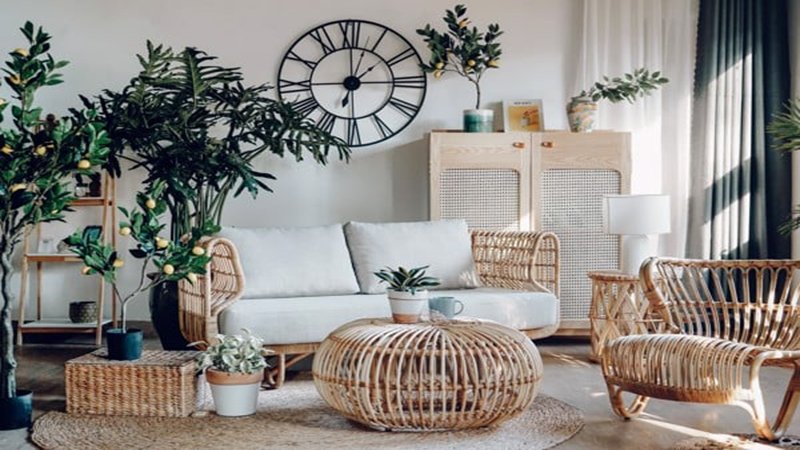
To enhance your home decor, combining the distinct styles of bamboo and rattan furniture is recommended. Start by using bamboo for larger, structural pieces to establish a modern base, while incorporating rattan in smaller accents to introduce warmth and texture.
Balance the sleek look of bamboo with the intricate patterns of rattan, and ensure that the colors and finishes complement each other for a cohesive and inviting space.
Practical Tips for Mixing Different Furniture Types
A cohesive and visually appealing result is the goal of blending different furniture types like bamboo and rattan.
- Balance proportions: Mix furniture of different sizes and shapes to create visual interest without clutter.
- Coordinate colors: Choose a color palette that works well with both bamboo and rattan to maintain a cohesive look.
- Blend textures: Combine the smooth texture of bamboo with the intricate weaving of rattan to enhance depth and contrast.
- Match styles: Ensure that the furniture styles complement each other, whether you prefer a modern, rustic, or eclectic theme.
- Use accent pieces: Introduce smaller rattan or bamboo items to tie together larger furniture pieces and create a unified decor scheme.
To create a harmonious and stylish interior design, you can effectively mix bamboo and rattan furniture by following these tips.
Key Considerations for Selecting Bamboo and Rattan Furniture
To ensure you make the best selection for your space when choosing bamboo and rattan furniture, here are some factors to consider:
- Quality and craftsmanship: Look for high-quality components with attention to detail and durability.
- Style compatibility: Choose furniture that matches your existing decor style to ensure a cohesive look.
- Functionality: Ensure that the furniture not only looks good but also meets your practical needs and is comfortable to use.
- Color and finish: Select colors and finishes that complement your room’s color scheme and overall aesthetic.
- Sustainability: Consider eco-friendly options and verify the sourcing of materials to support sustainable practices.
Choosing bamboo and rattan furniture that meets your functional needs and complements your home’s decor will become easy by considering these key factors.
The Environmental Impact of Bamboo and Rattan
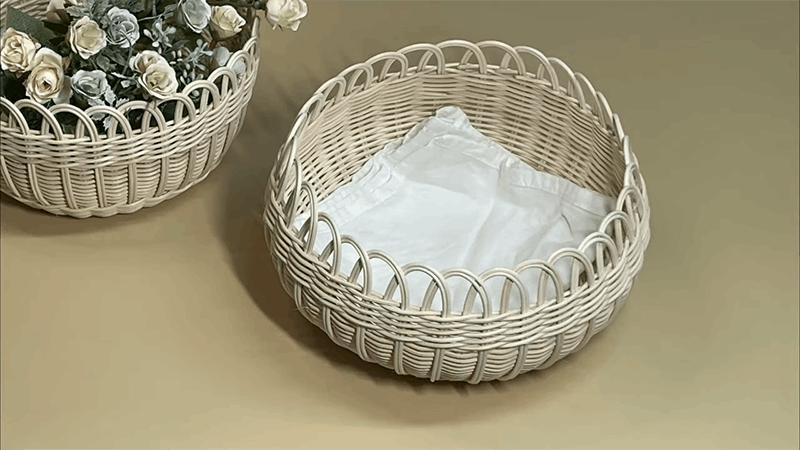
The environmental impact of bamboo and rattan varies significantly based on their growth patterns and harvesting practices. Growing quickly and causing little harm to the environment when harvested, bamboo also improves soil health and lowers erosion, making it a very sustainable plant. Rattan’s environmental impact varies; responsible harvesting practices minimize deforestation, but unsustainable methods can harm ecosystems.
Sustainability of Bamboo vs. Rattan
Bamboo and rattan are both eco-friendly, but their sustainability differs. Making greener decisions is made easier with this knowledge.
Bamboo: Bamboo is often praised for its sustainability. It grows rapidly—up to 3 feet per day—and can be harvested in 3 to 5 years without causing significant environmental damage. Its cultivation improves soil health and absorbs carbon dioxide, making it a highly renewable and environmentally friendly resource.
Rattan: Rattan’s sustainability depends on how it is harvested. When managed responsibly, rattan harvesting has a relatively low environmental impact. However, deforestation and loss of biodiversity can be the result of unsustainable practices. Careful management is required when procuring rattan sustainably to make sure that the forest ecosystems from which it is taken are not harmed.
Finding Eco-Conscious Brands for Bamboo and Rattan
To find eco-conscious bamboo and rattan brands, look for those that prioritize sustainability and transparency. Seek certifications like FSC (Forest Stewardship Council) for responsible sourcing. Brands such as WipartisanVN, known for using sustainably harvested materials and reducing their carbon footprint, often highlight their commitment to eco-friendly practices and offer certified sustainable products.
Conclusion
Understanding the difference between rattan and bamboo is essential for choosing the right material for your decor. Both offer natural beauty, but their unique features make them ideal for different applications. To create a beautiful and sustainable home, the material that best suits your style should be selected.
Hello, I am Althea Stone, a devoted enthusiast of handicrafts, finds solace and creativity in the intricate artistry of handmade goods. My passion for crafting extends beyond mere hobby, serving as a gateway to self-expression and a means to infuse everyday life with beauty and ingenuity.

